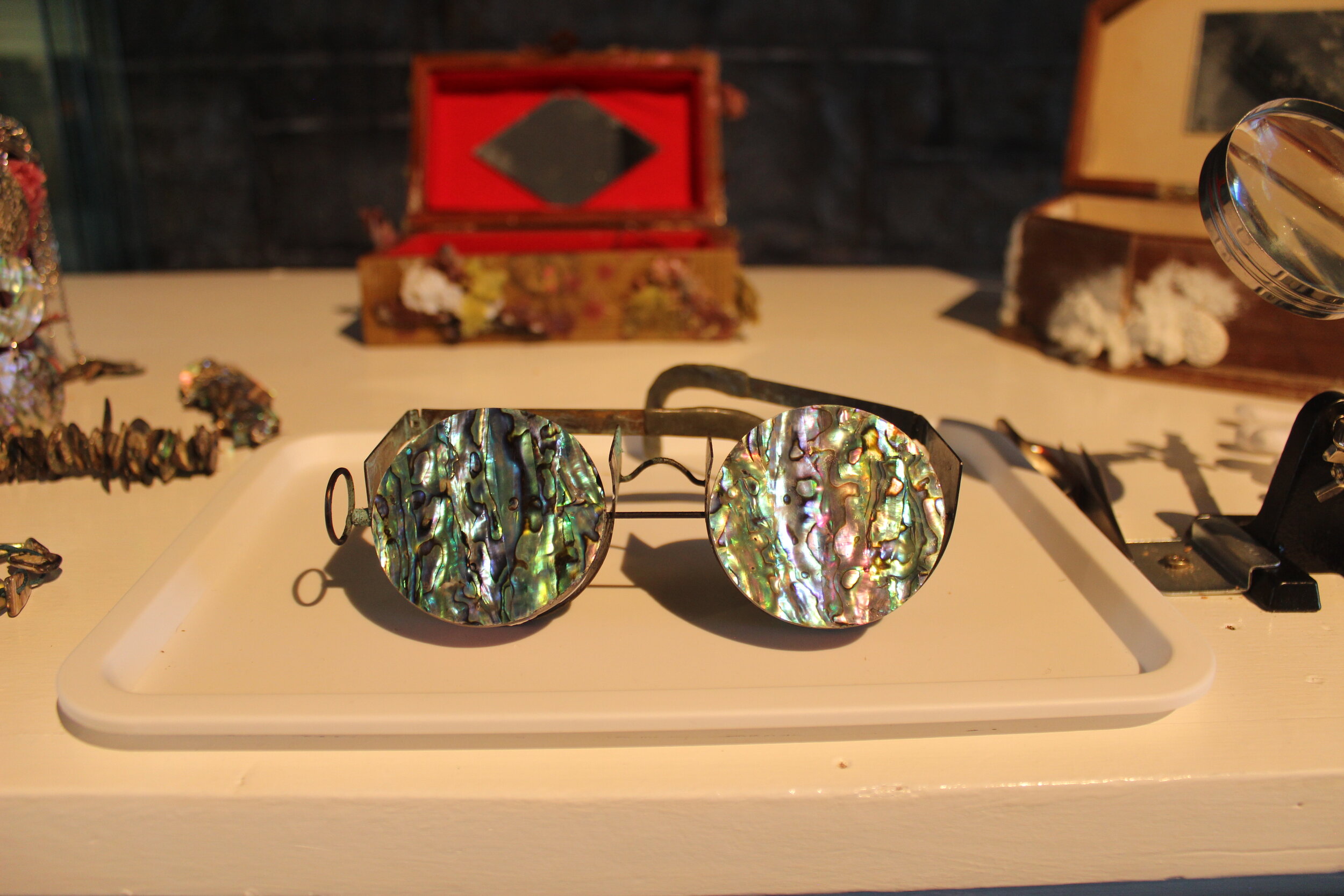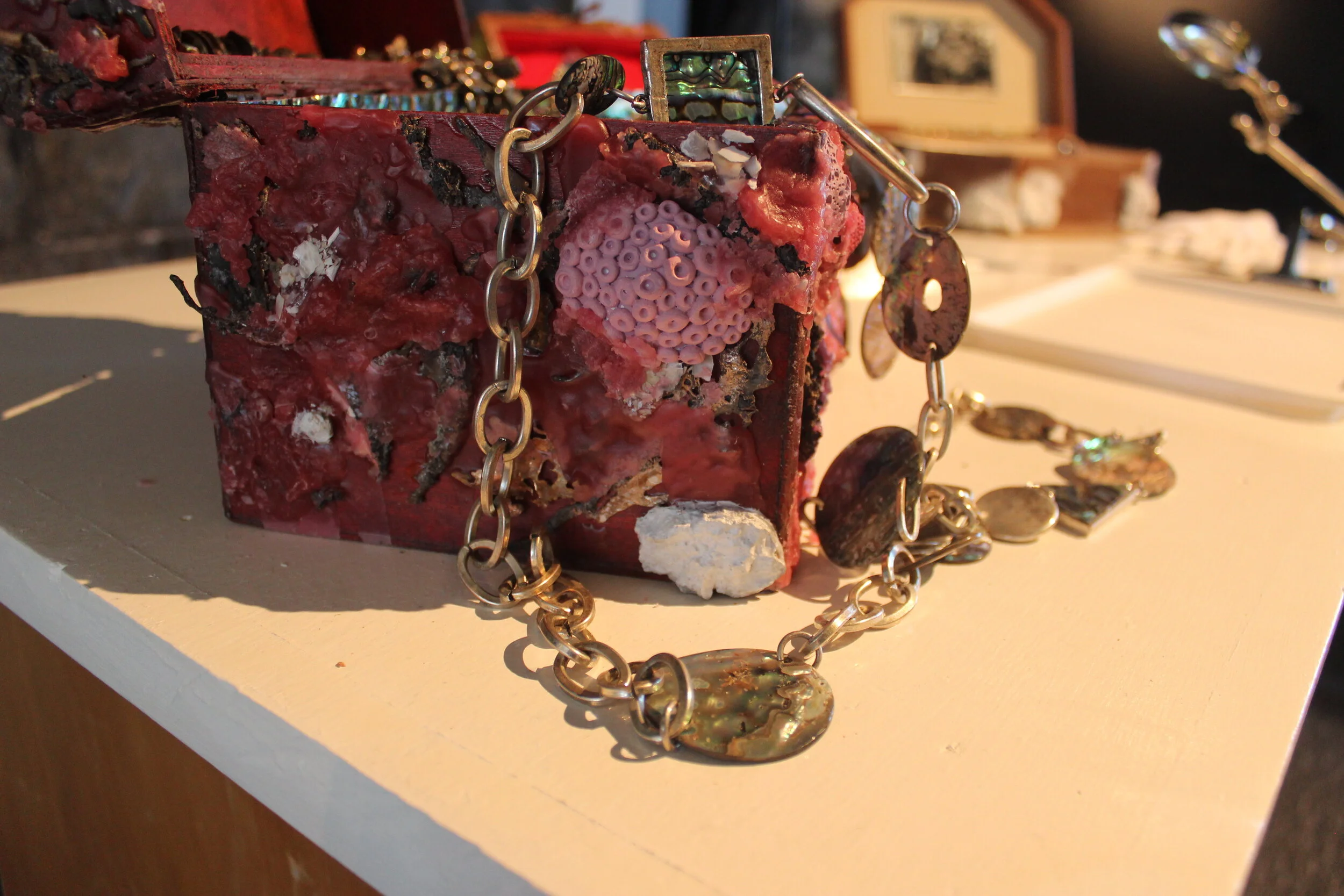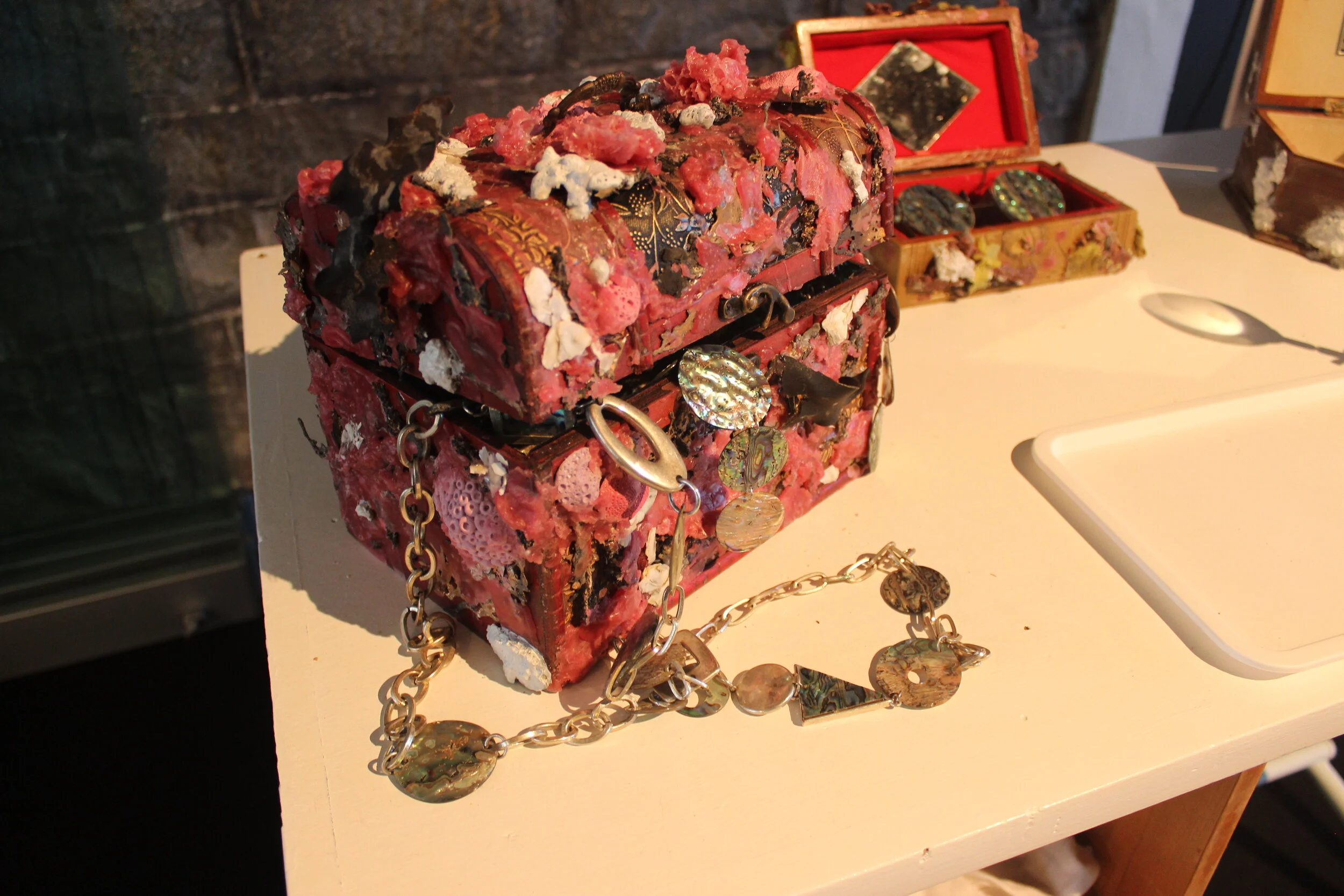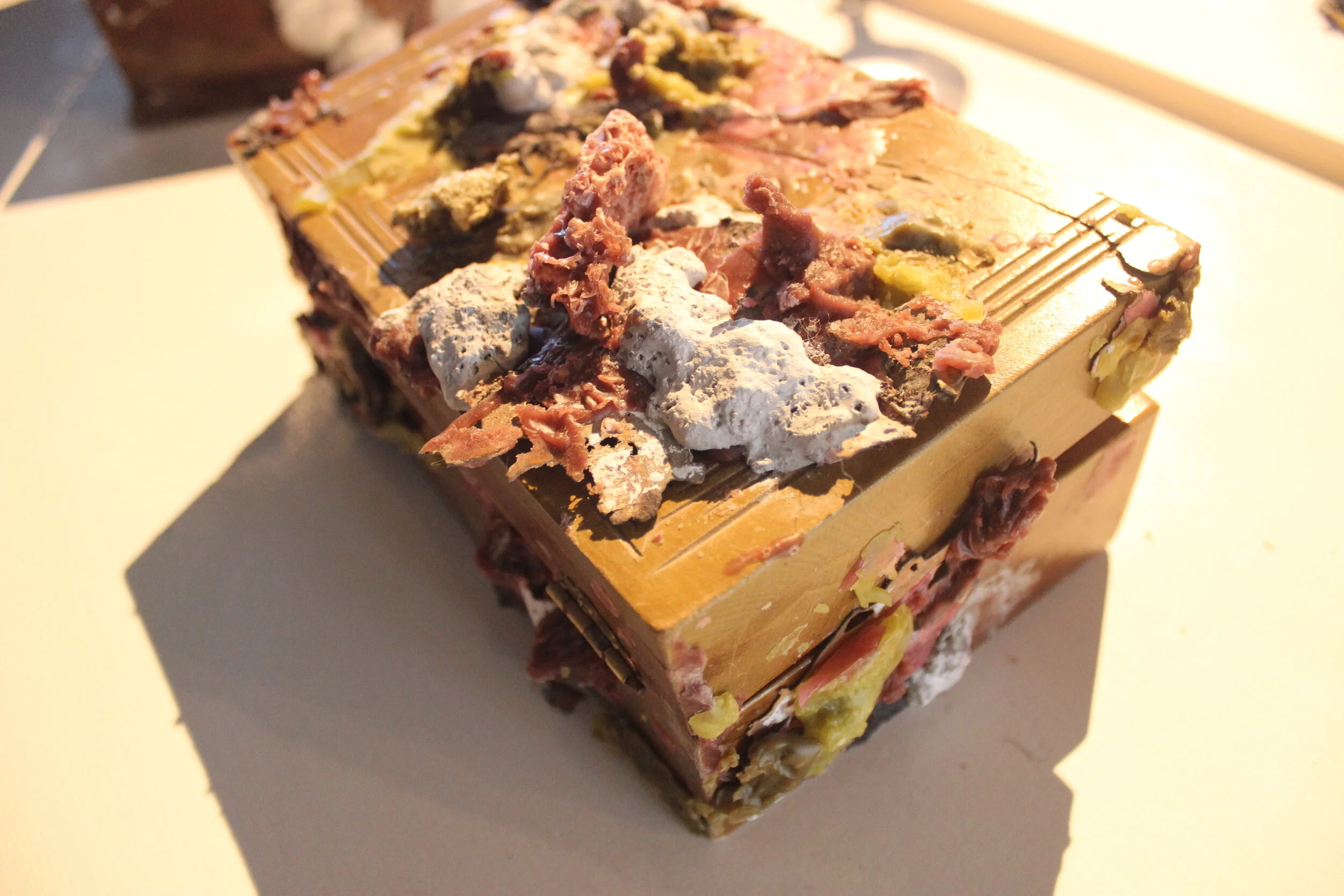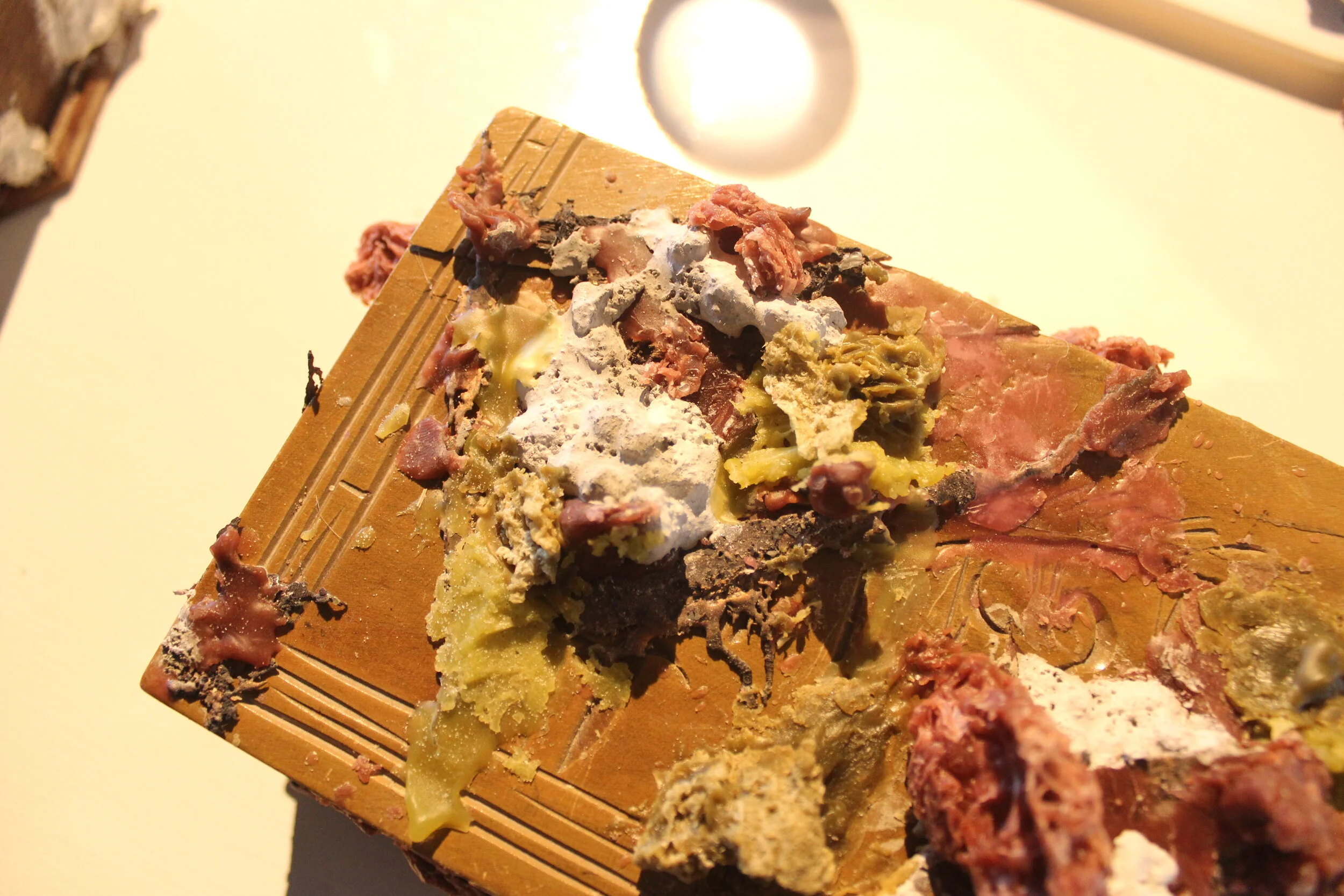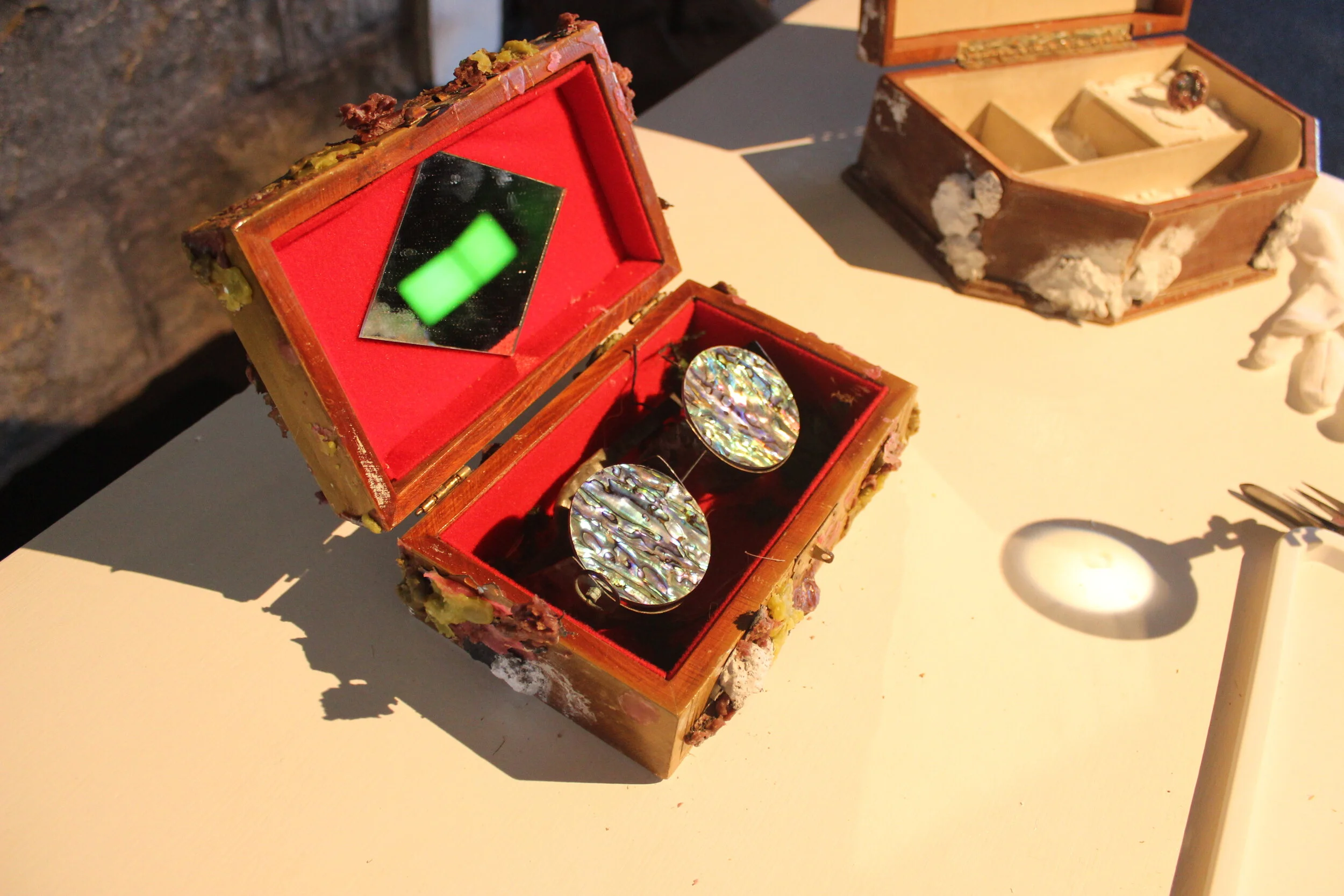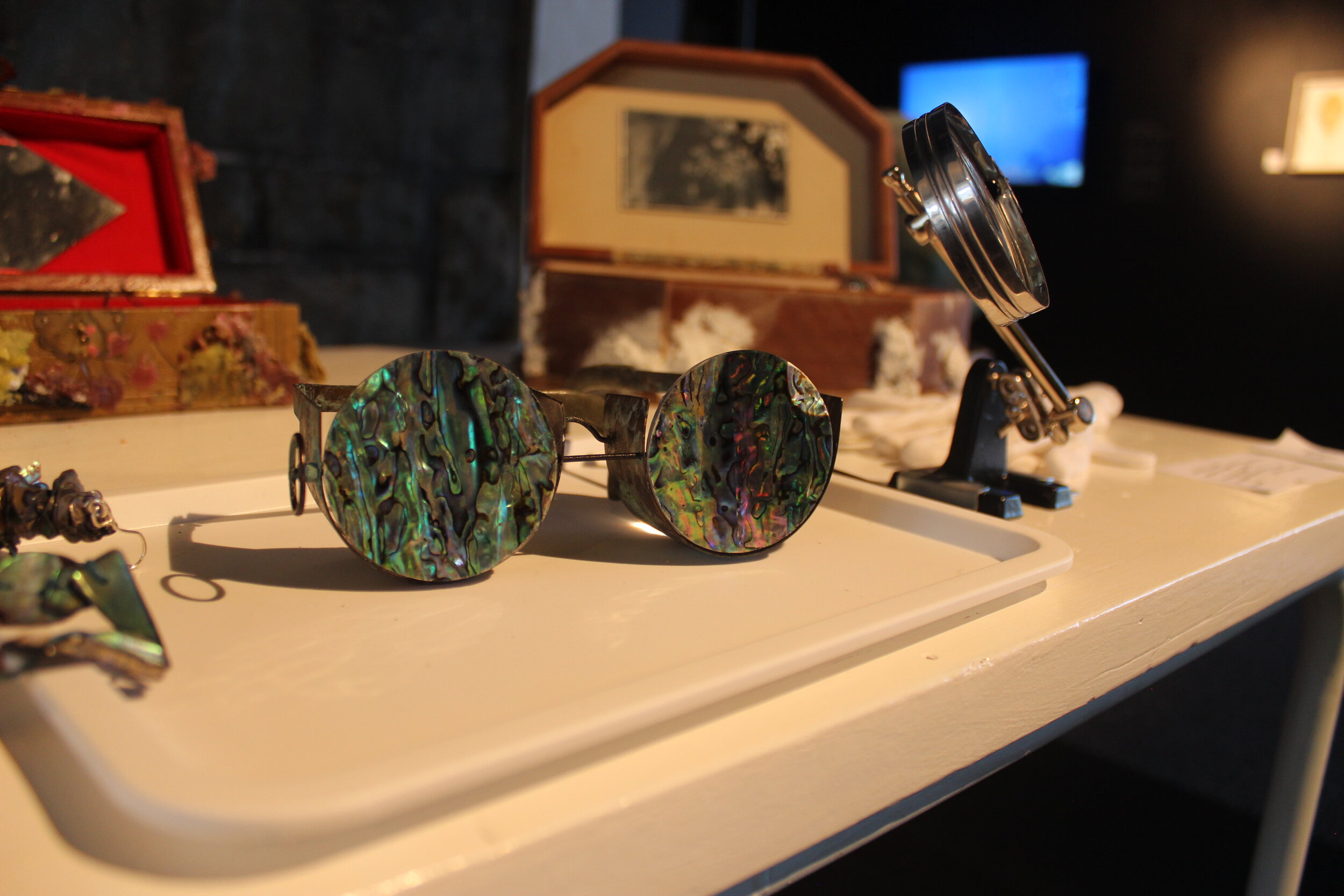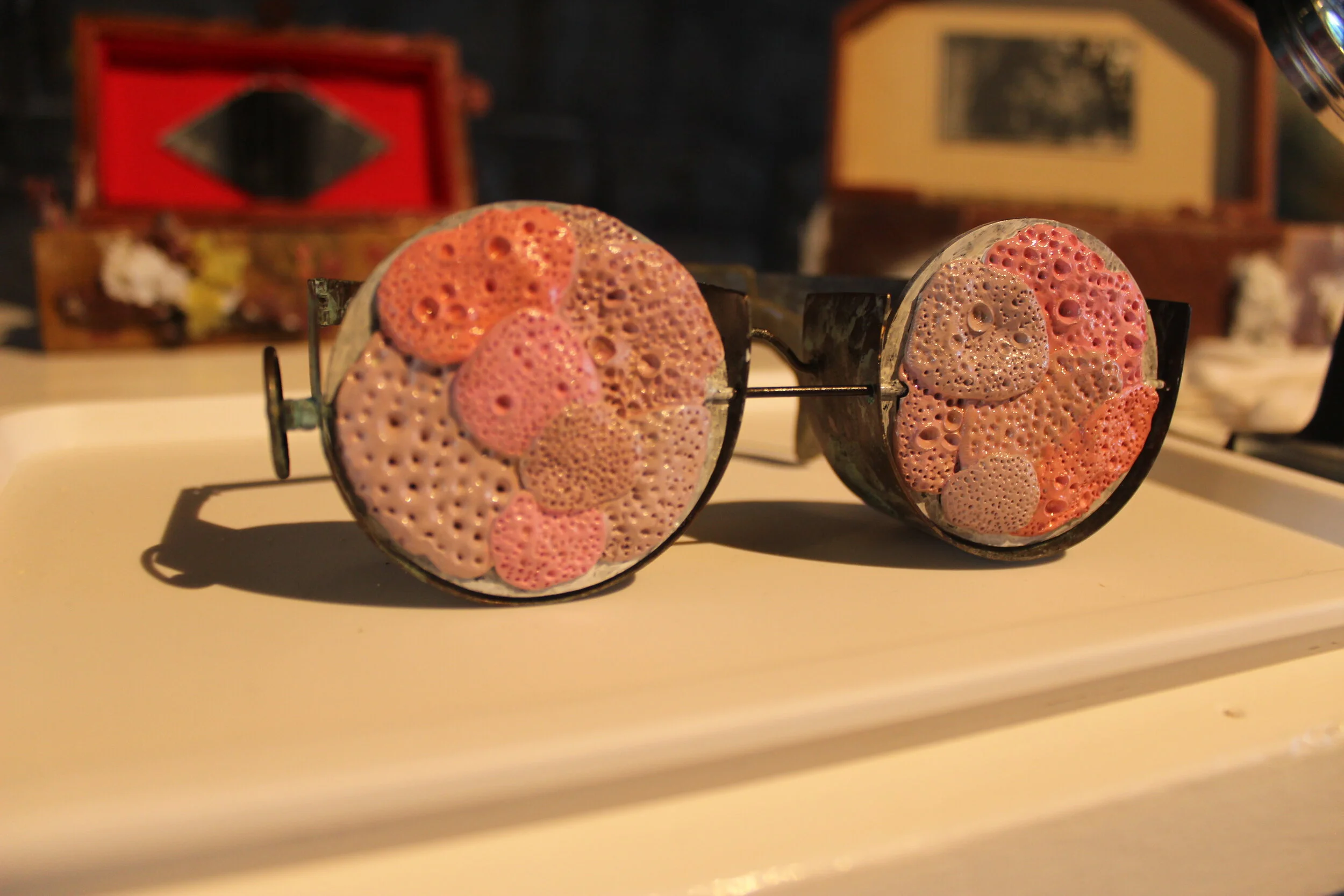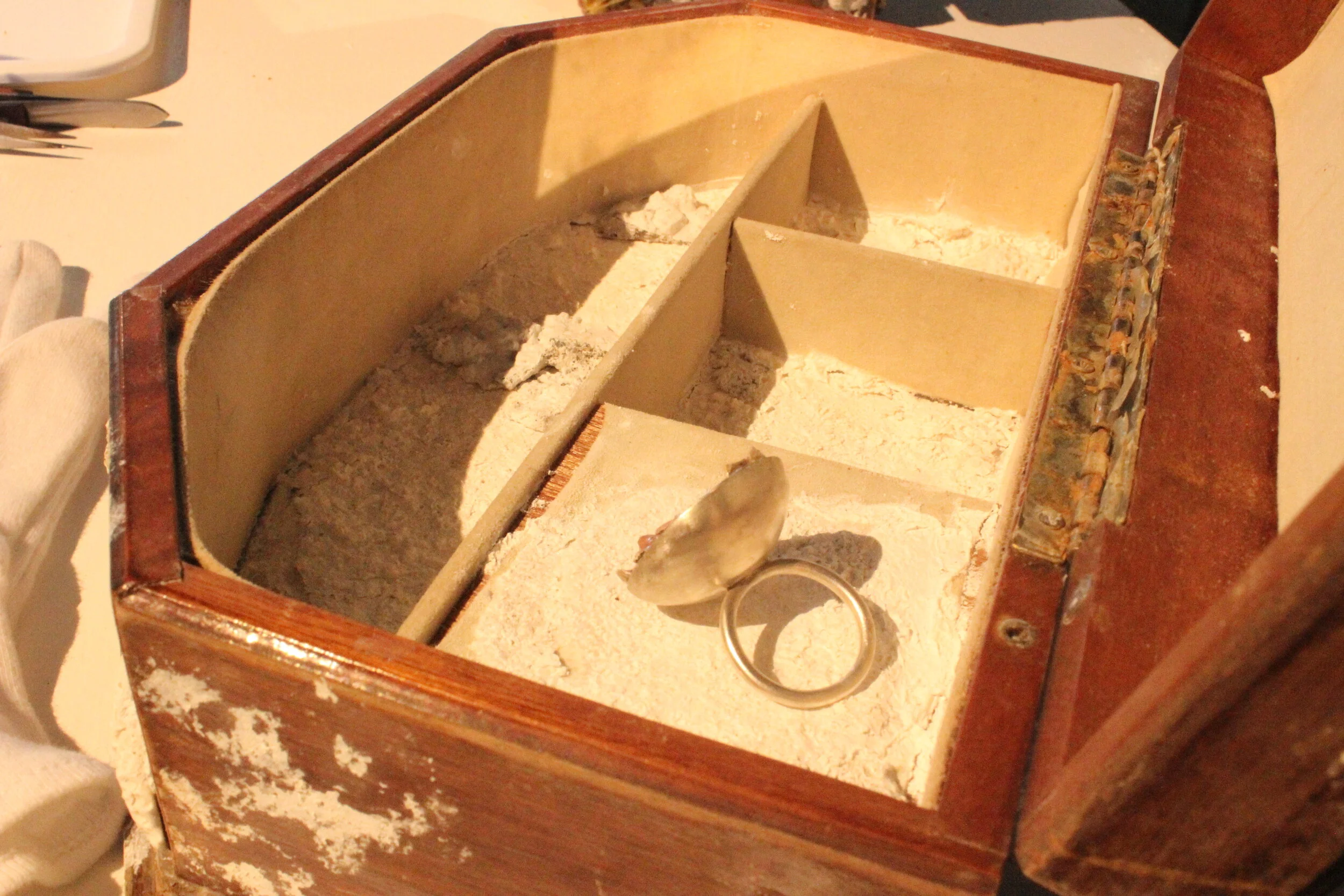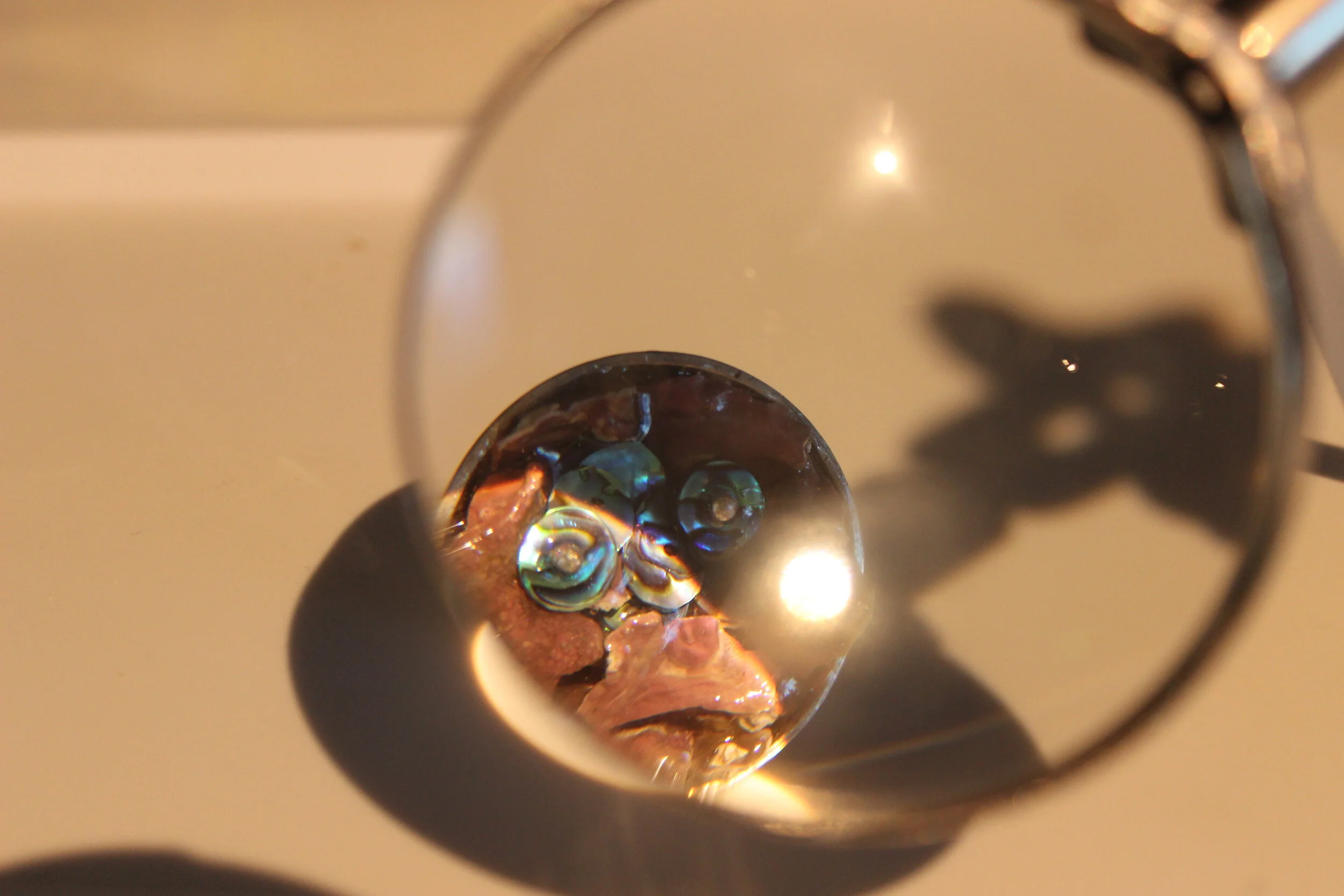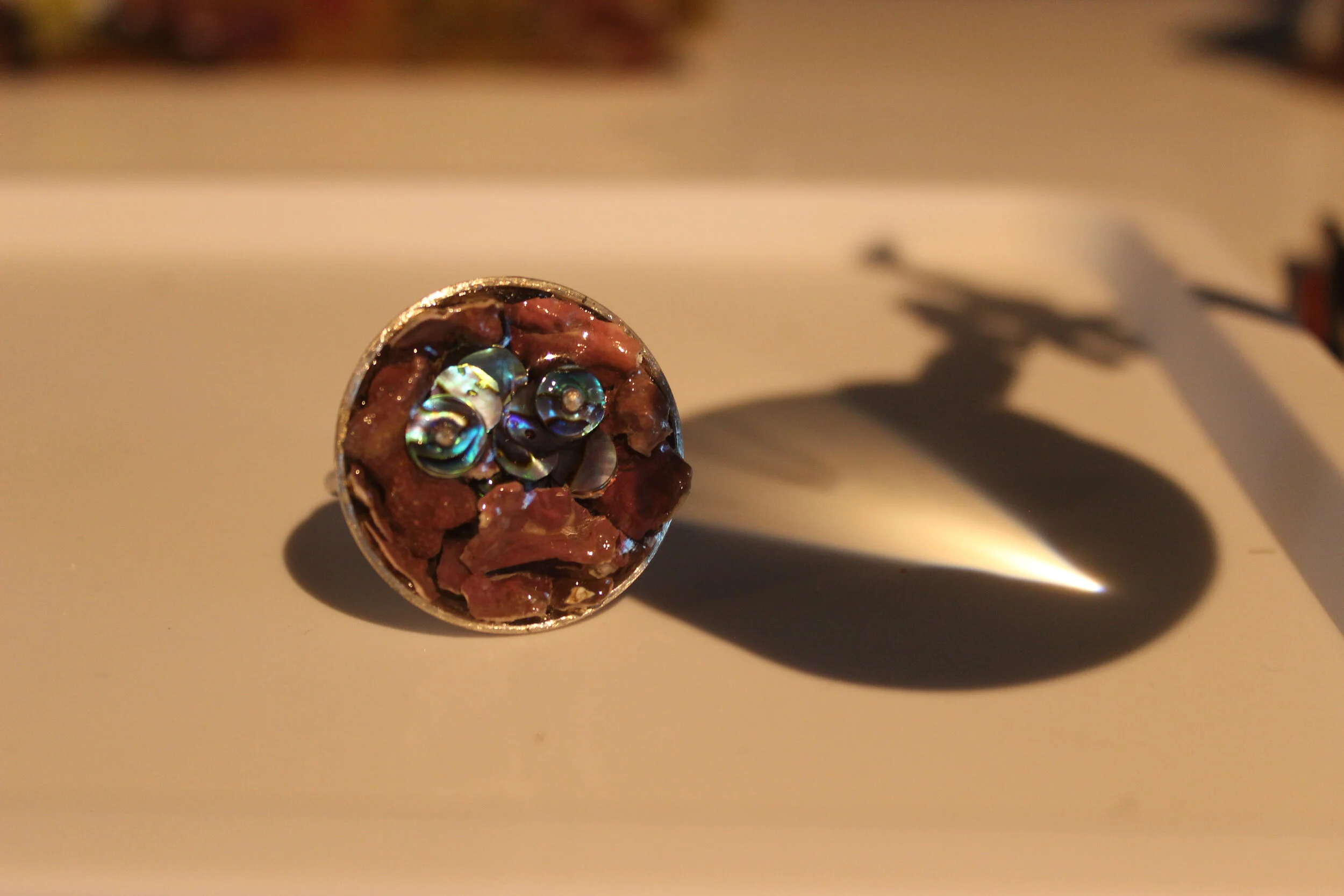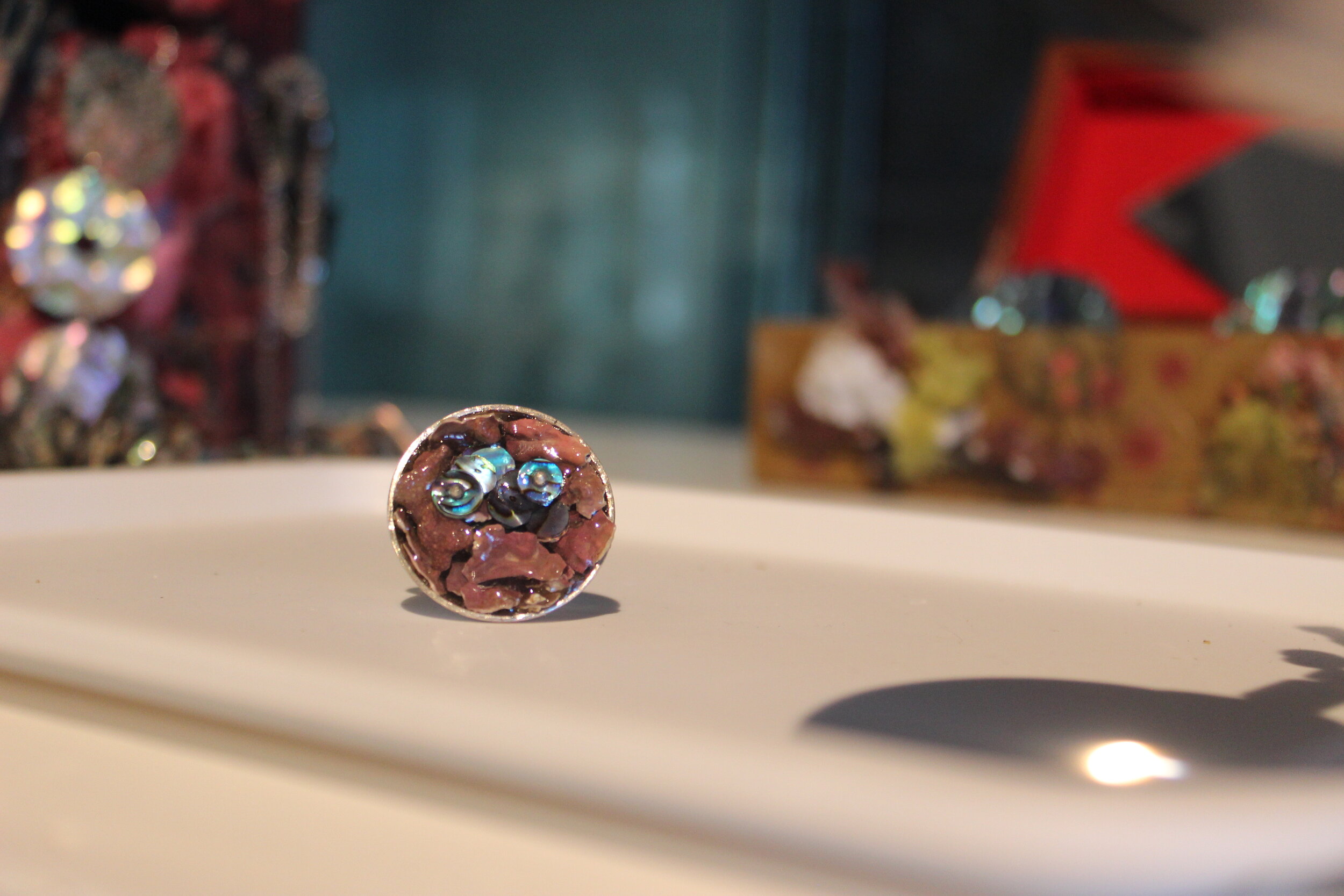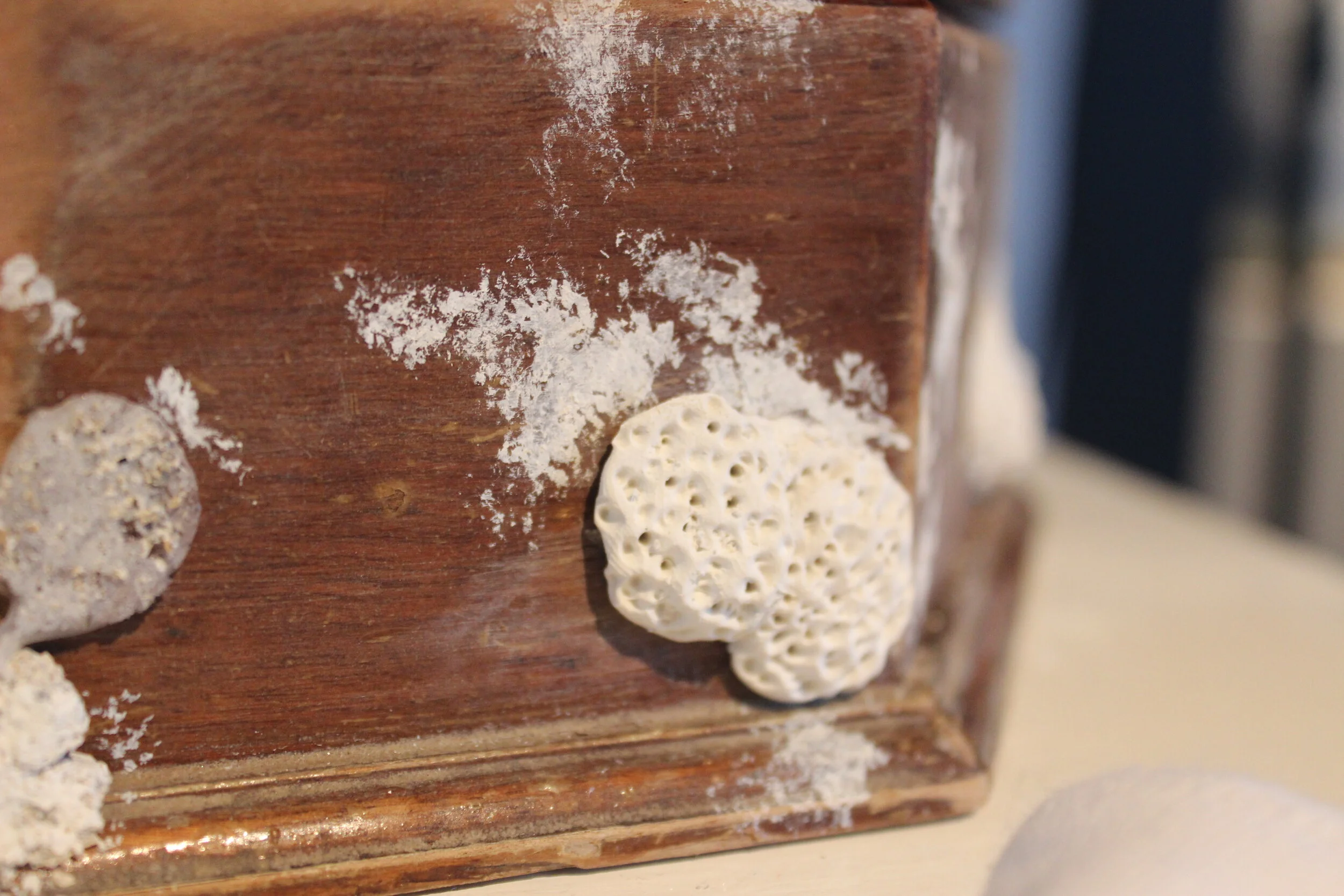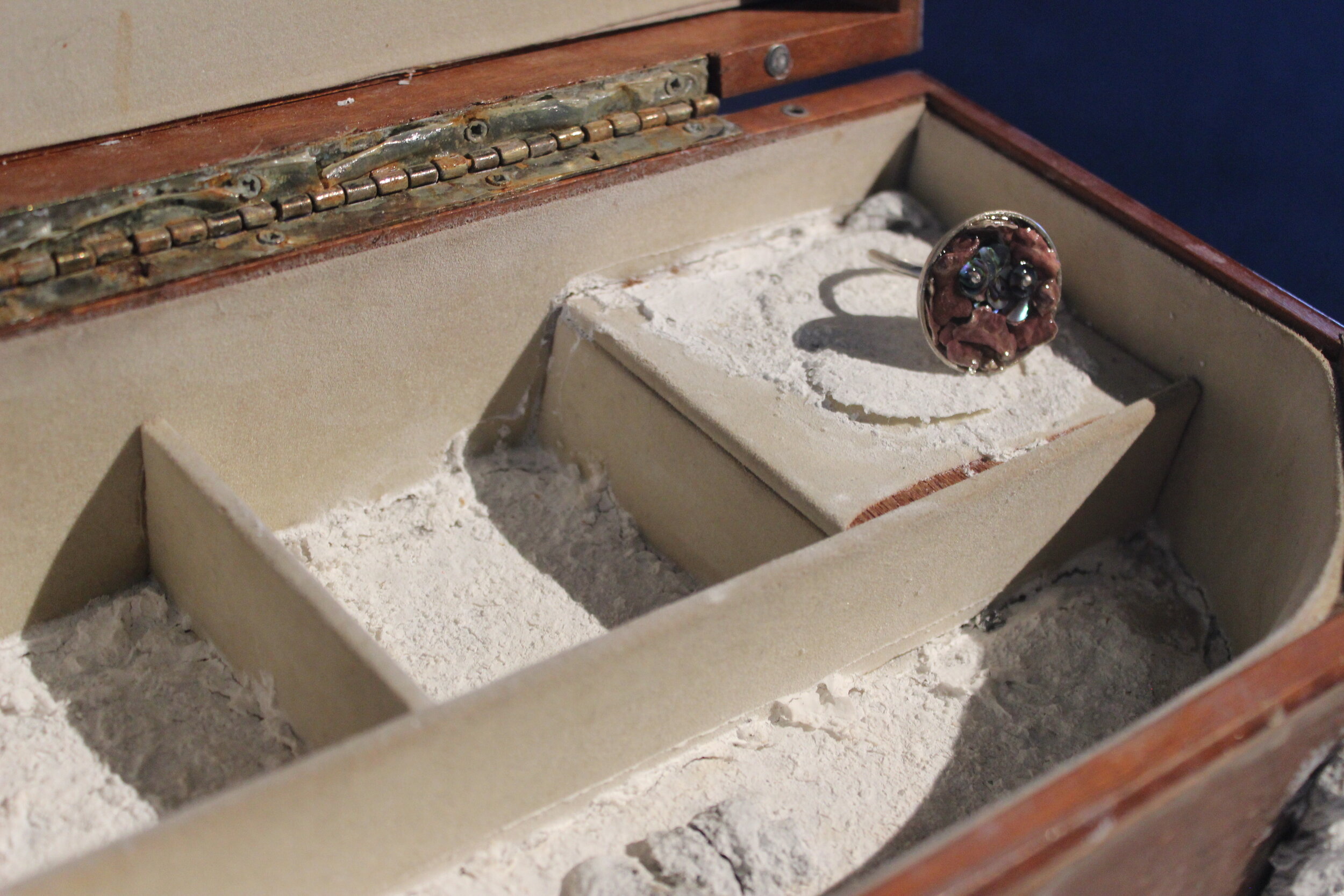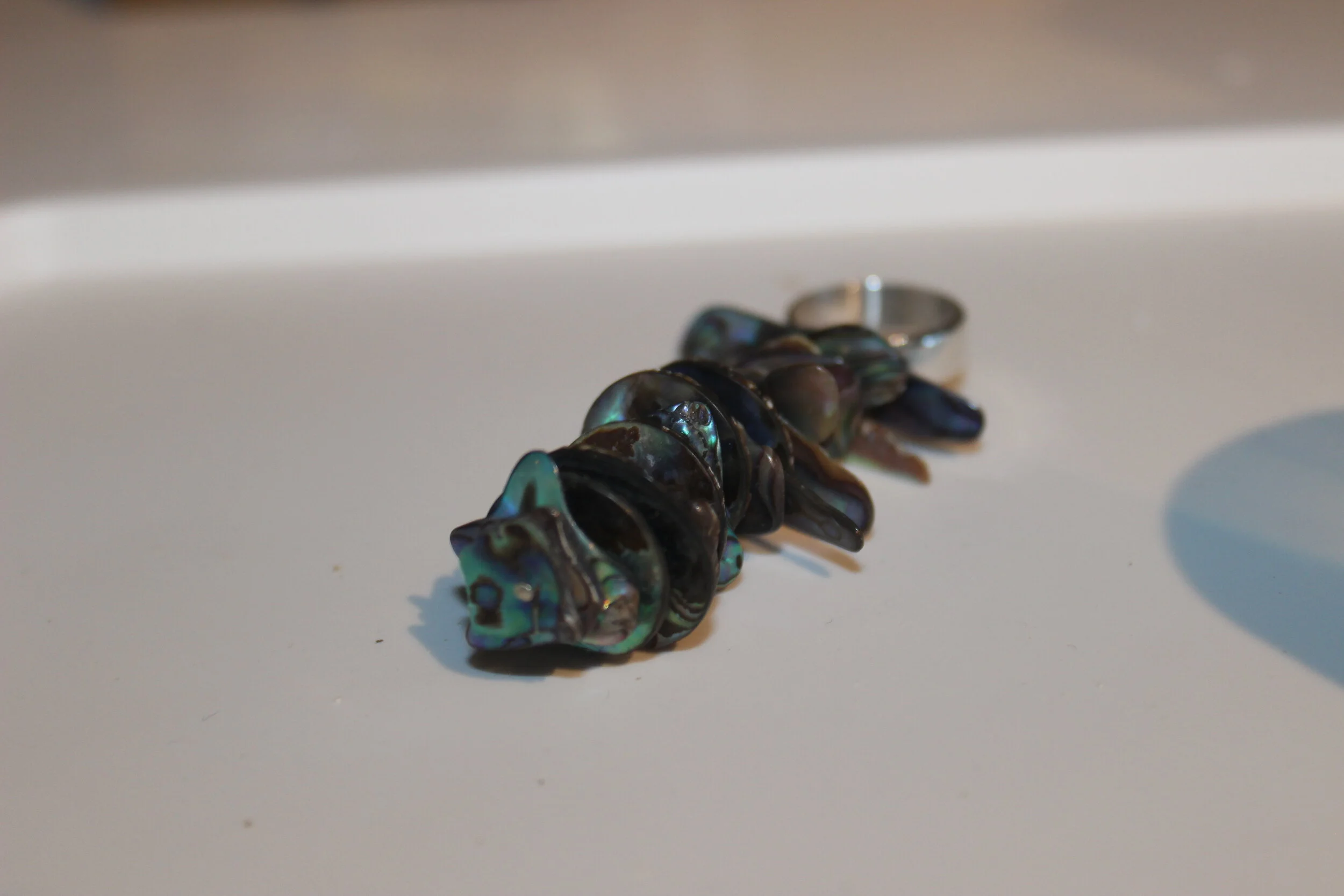Art and Oceans: What do you foresee? (2018)
What do you foresee? is a collaborative project, as a part of the annual Art and Science project facilitated by Jenny Rock (Otago Univeristy) and Pam McKinley (Dunedin School of Art). Nadjejda Espinel and Anna Kluibenschedl are both PhD students working in marine science. Lucy Winton, a multidisciplinary sculpture artist and myself, responded to their research on Ocean acidification, pink coralline algae and paua. The following text is an excerpt from our article for Junctures Journal.
“The work consists of three jewellery or treasure boxes, each representing a different potential stage of ocean acidification. The whimsical idea of deep-sea treasure pulled from the depths draws the viewer in to explore each box, with the element of discovery adding excitement and curiosity. The first box, covered in a healthy growth of bright crustose coralline algae, is filled with an abundance of paua jewellery. The most sensitive time for paua is at the larval stage, in which they settle and grow on coralline algae. The invertebrate can take up to ten years to mature, growing the distinct blue-green shimmering shell seen in every souvenir shop. Paua shell has the status of a prized national icon, and in Maori culture is considered taonga, while simultaneously being consumed as mass-produced kitsch jewellery and ashtrays. It is this lack of value placed on common species that makes them vulnerable.
In the second box, the pink crusty growth has been replaced with brown algae, which might be more competitive in the future. Paua larvae settles on crustose coralline algae, so an ocean without these building blocks is tougher to survive in. A once common species could become endangered. The box contains one precious object as a warning to protect what we currently take for granted: a pair of glasses with rotating disc-like ‘lenses.’ One side is paua and, when turned, the other side shows a cluster of pink coralline algae, representing the two species’ reliance on each other. The wearer struggles to see something when it is so close to their face, reminiscent of the adage, “I can’t see the forest for the trees.” The glasses reflect our struggle to understand complex ecological relationships in what feels like a race against an exponentially growing problem. Inspiration to make a pair of glasses came from the desire to immerse the wearer. Immersion need not involve the wearer’s full body. By covering their eyes, they are given a sense of total immersion. This idea stems from a quote by founder of Parley for the Oceans, Cyrill Gutsch – “We want to people to get their heads underwater” – urging us to think more about the ocean, experience the ocean, and consider invisible issues like OA. Further inspiration for the glasses comes from traditional Maori carving. Paua shell is used on eyes to represent the eyes of our ancestors looking down from the night sky. In terms of climate change and ocean acidification, we are the eyes looking forward for future generations.
The final box presents a bleak picture of an apocalyptic ocean. The few things that have grown on it are bleached and dead. With even coralline algae now a rare and treasured species, it has been carefully preserved in a solitary ring along with a cluster of paua shell, placed inside the desolate box. In this box, seemingly too late, we see paua and algae side by side. The use of paua again references eyes, and the algae is clustered womb-like around it. When worn on the hand, held up to be gazed at, the ring gazes back.”
(text by Meg Van Hale and Lucy Winton, photos by Van Hale, Winton, and Pam McKinley)

